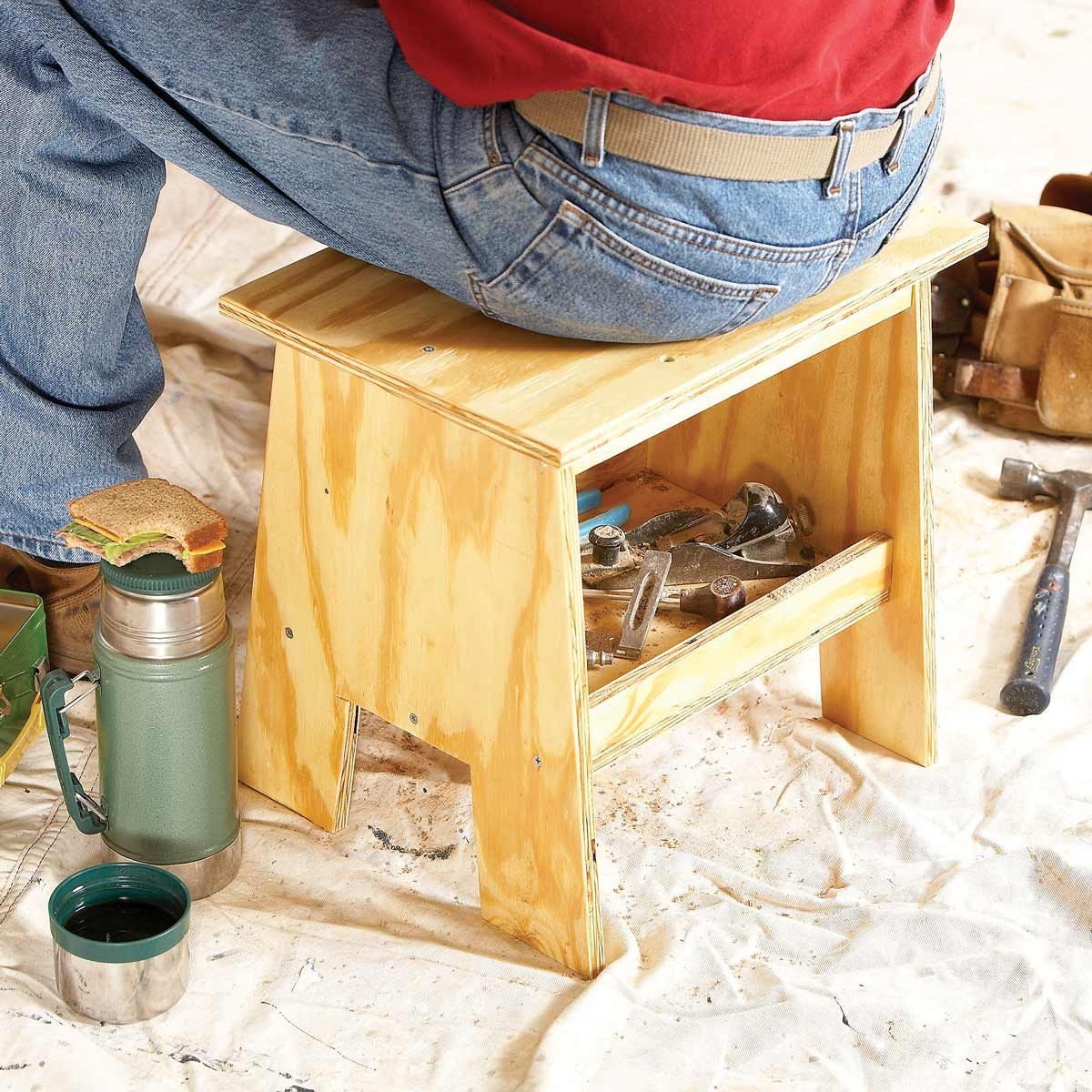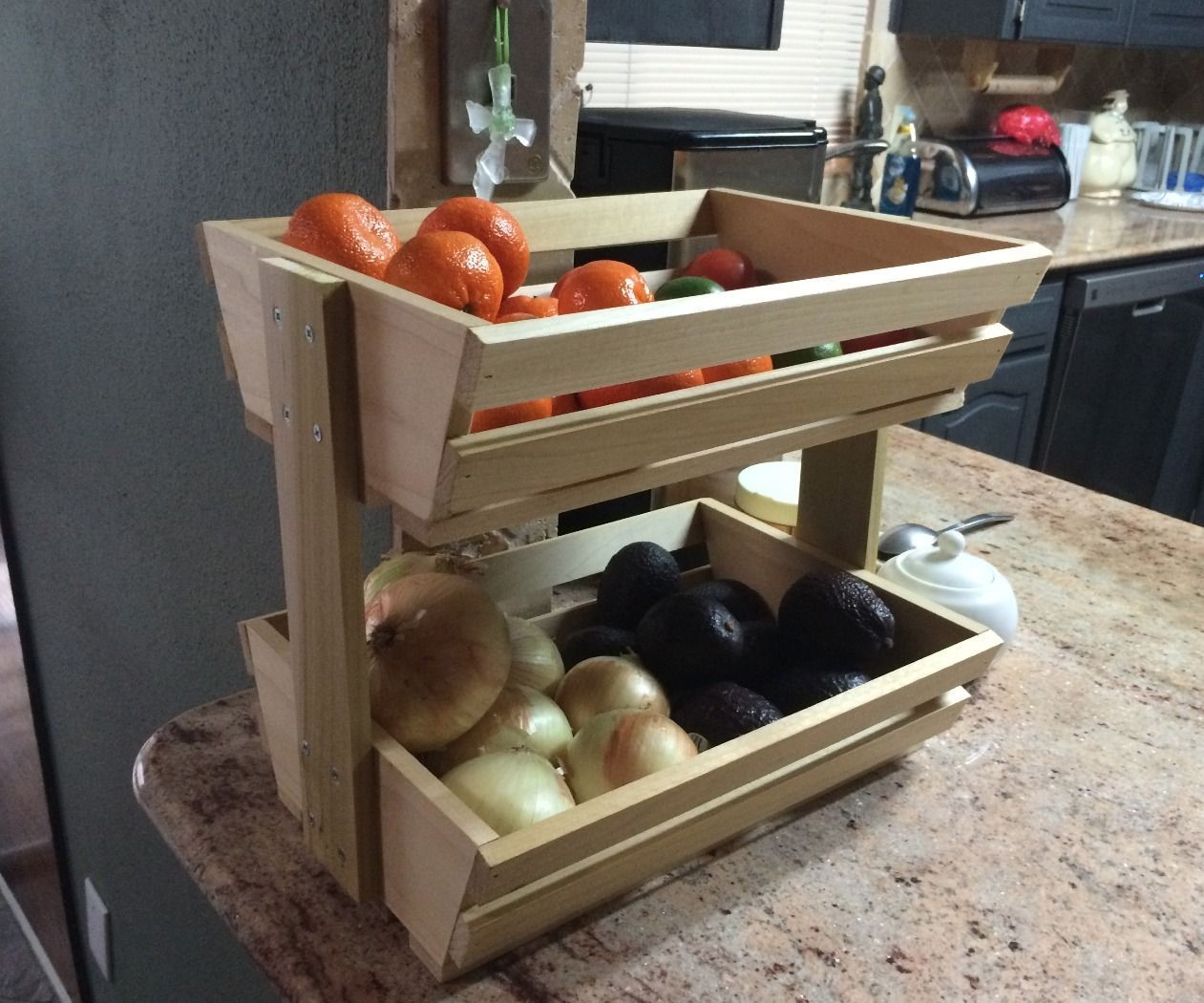Easy wood projects offer a fantastic gateway into the rewarding world of woodworking. Whether you’re a complete novice or have some experience, these projects are designed to be approachable and enjoyable, allowing you to create beautiful and functional items without feeling overwhelmed. From simple birdhouses to charming decorative pieces, you’ll discover the joy of bringing wood to life with your own hands.
The beauty of easy wood projects lies in their accessibility. You don’t need a vast workshop or a collection of expensive tools to get started. Basic hand tools, a few essential power tools, and a willingness to learn are all you need to embark on this creative journey. With a little patience and practice, you’ll be amazed at what you can achieve.
Introduction to Easy Wood Projects
Woodworking offers a rewarding and enjoyable experience, especially for beginners. The tactile nature of working with wood, the satisfaction of creating something tangible, and the relatively low barrier to entry make it a popular hobby. Even if you’ve never held a saw before, you can learn the basics of woodworking and start crafting your own projects.
Basic Tools and Materials
Woodworking requires a few essential tools and materials to get started. These tools are relatively inexpensive and readily available at most hardware stores or online retailers.
- Saw: A handsaw is a good starting point, but a jigsaw or circular saw can provide more versatility.
- Hammer: A claw hammer is useful for driving nails and removing them.
- Screwdriver: A set of Phillips and flathead screwdrivers is essential for assembling projects.
- Measuring Tape: Accurate measurements are crucial for woodworking. A tape measure with a locking mechanism is recommended.
- Wood Glue: Wood glue is used to bond pieces of wood together.
- Sandpaper: Sandpaper is used to smooth out rough surfaces and create a polished finish.
- Clamps: Clamps are used to hold pieces of wood together while glue dries.
Choosing the Right Wood
The type of wood you choose will depend on the project you’re working on. Here are some common types of wood used in woodworking:
- Pine: Pine is a softwood that is affordable and easy to work with. It is often used for furniture, crafts, and home decor projects.
- Oak: Oak is a hardwood that is strong and durable. It is commonly used for furniture, flooring, and cabinetry.
- Maple: Maple is a hardwood known for its beautiful grain patterns. It is often used for furniture, cutting boards, and musical instruments.
- Cherry: Cherry is a hardwood that has a reddish-brown color and a fine grain. It is often used for furniture, cabinets, and other decorative items.
- Walnut: Walnut is a hardwood with a rich brown color and a distinctive grain pattern. It is often used for furniture, cabinets, and other high-end woodworking projects.
Basic Woodworking Techniques
Learning basic woodworking techniques is essential for anyone interested in creating their own projects, from simple crafts to more complex furniture. These techniques involve understanding how to use various tools safely and effectively, and mastering the fundamentals of cutting, sanding, and finishing wood.
Safety Precautions in Woodworking
Safety is paramount in woodworking. It is crucial to prioritize safety by using appropriate safety gear and adhering to safety guidelines. Here are some essential safety precautions:
- Always wear safety glasses to protect your eyes from flying debris.
- Use ear protection to safeguard your hearing from the noise of power tools.
- Wear a dust mask to prevent inhaling wood dust, which can be harmful to your respiratory system.
- Keep your workspace clean and organized to prevent accidents.
- Always unplug power tools when not in use.
- Never reach across a running saw blade.
- Use clamps to secure your workpieces, ensuring they are stable and won’t move during cutting.
- Always use sharp tools, as dull tools require more force and can lead to accidents.
- Be aware of the surrounding area and ensure there are no obstructions or hazards.
Using Basic Woodworking Tools
Various tools are used in woodworking, each serving a specific purpose. Understanding how to use these tools safely and effectively is essential for achieving desired results.
Saws
Saws are used for cutting wood. Different types of saws are available, each designed for specific tasks.
- Hand Saws: These are versatile saws used for various tasks, including crosscutting and ripping. Hand saws come in different sizes and tooth configurations, depending on the type of wood and the desired cut.
- Circular Saws: These power saws are ideal for making straight cuts in wood. They are available in different sizes and have adjustable blades, allowing for precise cutting.
- Jigsaw: This tool is used for making curved cuts in wood. It has a reciprocating blade that allows for intricate shapes and patterns.
- Table Saw: This stationary power saw is used for making precise, straight cuts in wood. It has a large table that supports the workpiece and a rotating blade that can be adjusted to different depths and angles.
Drills
Drills are used for creating holes in wood.
- Hand Drills: These are manual drills that require physical force to operate. They are suitable for small drilling tasks and are often used for pilot holes before driving screws.
- Power Drills: These electric drills provide more power and speed, making them ideal for larger drilling tasks. They come in various sizes and have adjustable speeds and torque settings.
- Driver Drills: These specialized drills are designed for driving screws. They have a clutch mechanism that helps prevent overtightening and damaging the screw head.
Sanders
Sanders are used for smoothing and finishing wood surfaces.
- Hand Sanders: These manual sanders are available in various forms, including block sanders and sanding sponges. They are suitable for smaller sanding tasks and are often used for achieving fine finishes.
- Belt Sanders: These power sanders use a continuous abrasive belt to remove material quickly. They are ideal for rough sanding and shaping wood surfaces.
- Orbital Sanders: These power sanders use a rotating sanding pad to create a smooth finish. They are available in different sizes and have adjustable speeds, making them suitable for various sanding tasks.
Cutting Wood
Cutting wood is a fundamental woodworking technique.
- Marking the Cut: Before cutting, it is essential to mark the wood accurately. Use a pencil or marking gauge to indicate the desired cut line.
- Choosing the Right Saw: Select the appropriate saw for the task. Consider the type of cut, the thickness of the wood, and the desired finish.
- Making the Cut: Ensure the workpiece is securely clamped or supported before making the cut. Use a steady hand and follow the marked line. Avoid rushing the cut, as this can lead to uneven or inaccurate results.
Sanding Wood
Sanding wood is crucial for creating smooth and even surfaces.
- Sanding Direction: Sand with the grain of the wood. This helps prevent scratches and ensures a smooth finish. When sanding curves, use a sanding block or a flexible sanding sponge to conform to the shape.
- Sanding Grit: Start with a coarser grit sandpaper to remove imperfections and gradually progress to finer grits for a smooth finish. Use a progressively finer grit to remove sanding marks from the previous grit.
- Sanding Pressure: Apply even pressure while sanding. Avoid pressing too hard, as this can cause uneven sanding and damage the wood.
Finishing Wood
Finishing wood enhances its appearance and protects it from damage.
- Cleaning the Surface: Before applying any finish, ensure the wood surface is clean and free of dust and debris.
- Choosing the Right Finish: Various wood finishes are available, including stains, paints, varnishes, and oils. The choice depends on the desired effect and the type of wood.
- Applying the Finish: Apply the finish according to the manufacturer’s instructions. Use a brush, roller, or spray gun for even application. Allow the finish to dry completely before applying additional coats.
Resources for Woodworkers

The woodworking community is vast and supportive, offering a wealth of resources to help you learn, grow, and find inspiration for your projects. From online platforms to local communities, there’s a world of information and support waiting to be discovered. This section will explore some of the most valuable resources for woodworkers, including online plans and tutorials, tips for finding affordable wood and tools, and ways to connect with other woodworking enthusiasts.
Reputable Online Resources for Woodworking Plans and Tutorials
Online platforms offer a treasure trove of woodworking plans and tutorials, catering to all skill levels and project types. These resources can provide detailed instructions, step-by-step guides, and even video demonstrations, making it easier than ever to learn new techniques and bring your woodworking ideas to life. Here are some reputable online resources:
- Ana White: Ana White’s website is a popular destination for free woodworking plans, offering a wide range of projects, from furniture to home decor.
- Woodworking for Mere Mortals: This website features detailed woodworking plans, tutorials, and articles, covering various aspects of woodworking, from basic techniques to advanced joinery.
- The Wood Whisperer: Hosted by Marc Spagnuolo, The Wood Whisperer provides a wealth of woodworking videos, tutorials, and plans, covering a wide range of topics and skill levels.
- Popular Woodworking: This website offers a combination of free and paid plans, articles, and videos, covering a wide range of woodworking topics.
- Fine Woodworking: Fine Woodworking magazine and website offer high-quality woodworking plans, tutorials, and articles for experienced woodworkers.
Tips for Finding Affordable Wood and Tools
Woodworking can be a rewarding hobby, but it’s essential to find ways to manage costs effectively. Here are some tips for finding affordable wood and tools:
- Check Local Lumber Yards and Sawmills: Local lumber yards and sawmills often offer better prices than big box stores, especially for larger quantities of wood.
- Look for Sales and Discounts: Keep an eye out for sales and discounts at woodworking stores, online retailers, and even garage sales.
- Consider Used Tools: Used tools can be a great way to save money, especially for basic tools like hand saws, chisels, and planes. Online marketplaces like eBay and Craigslist are good sources for finding used tools.
- Borrow Tools: If you’re only starting, consider borrowing tools from friends or family members who are already into woodworking. You can also check if your local library or community center offers tool lending programs.
- Shop Around for Supplies: Compare prices from different retailers before purchasing woodworking supplies. This can help you find the best deals and save money.
Woodworking Communities and Forums
Connecting with other woodworkers can be incredibly beneficial, providing opportunities to learn from experienced craftspeople, share your projects, and get support and advice. Here are some popular woodworking communities and forums:
- Woodworking.org: This forum is a popular destination for woodworkers of all skill levels, offering discussions on a wide range of topics, from project ideas to tool reviews.
- Lumberjocks: Lumberjocks is a large online community for woodworkers, featuring a forum, project galleries, and a marketplace for buying and selling woodworking tools and supplies.
- Reddit’s r/woodworking: This subreddit is a great place to find inspiration, ask questions, and share your woodworking projects with a large community of woodworkers.
- Local Woodworking Clubs: Consider joining a local woodworking club to connect with other woodworkers in your area and participate in workshops and events.
Woodworking Projects for Home Decor: Easy Wood Projects
Transforming your living space with handcrafted wooden accents can add a touch of warmth, personality, and sophistication. From functional furniture pieces to decorative accents, woodworking offers a unique avenue for expressing creativity and personal style.
Designing Wooden Furniture for the Home
Crafting wooden furniture for your home can be a rewarding and fulfilling endeavor. It allows you to create pieces that perfectly complement your existing decor and meet your specific needs. Here are some ideas for designing simple yet stylish wooden furniture pieces:
- Coffee Table: A coffee table is a staple in most living rooms, serving as a central gathering point for family and friends. You can design a simple coffee table with a rectangular or square top and sturdy legs. Consider adding a shelf for storage or incorporating a unique design element, such as a live edge slab for the tabletop.
- Nightstand: A nightstand is a practical addition to any bedroom. You can create a nightstand with drawers for storing books, glasses, or other essentials. Choose a design that complements your bed frame and overall bedroom style.
- Bookshelf: A bookshelf is a great way to showcase your book collection and add visual interest to a room. You can design a bookshelf with multiple shelves and a simple frame. Consider adding a decorative element, such as a curved back or a unique wood grain pattern.
Creating a Simple Wooden Wall Clock
A wooden wall clock can add a rustic charm and a touch of personality to your home decor. Here’s how to create a simple wooden wall clock:
- Prepare the Clock Face: Cut a circular piece of wood for the clock face. Use a router to create a recess for the clock mechanism.
- Install the Clock Mechanism: Choose a quartz clock mechanism with hands. Attach the mechanism to the back of the clock face, ensuring the hands align with the clock’s markings.
- Add Clock Markings: Use a pencil to mark the hours on the clock face. You can use stencils or freehand drawing for the markings.
- Decorate the Clock: Stain or paint the clock face to match your home decor. Consider adding a decorative border or embellishments to personalize the clock.
- Attach the Clock Hands: Attach the clock hands to the mechanism, ensuring they are properly secured.
- Install the Clock: Hang the clock on your wall using a suitable hook or hanger.
Designing a Decorative Planter Box
A wooden planter box can add a touch of nature and elegance to your home decor. Here’s how to design a simple planter box:
- Choose the Dimensions: Determine the size and shape of the planter box based on the plants you wish to grow.
- Cut the Wood: Cut the wood pieces for the planter box using a saw. Ensure the pieces are cut to the correct dimensions and that the joints are tight.
- Assemble the Box: Use wood glue and screws to assemble the planter box. Make sure the joints are secure and that the box is level.
- Add a Drainage Hole: Drill a drainage hole in the bottom of the planter box to allow excess water to escape.
- Finish the Box: Sand the box smooth and apply a stain or paint to match your home decor.
- Plant Your Flowers: Fill the planter box with potting soil and plant your chosen flowers or herbs.
Tips for Staining and Finishing Wood to Match Home Decor
Staining and finishing wood are essential steps in creating beautiful and durable wooden projects. Here are some tips for choosing the right stain and finish to match your home decor:
- Consider the Wood Species: Different wood species have unique grain patterns and color variations. Choose a stain that complements the natural beauty of the wood.
- Select a Stain Color: Choose a stain color that complements your home decor. Consider the colors of your walls, furniture, and other accents.
- Apply the Stain Evenly: Use a brush or cloth to apply the stain evenly to the wood surface. Avoid over-applying the stain, as this can lead to an uneven finish.
- Choose a Finish: Choose a finish that provides the desired level of protection and sheen. Options include polyurethane, varnish, and wax.
- Apply the Finish in Thin Coats: Apply the finish in thin coats, allowing each coat to dry completely before applying the next. This will help to ensure a smooth and even finish.
Woodworking Projects for Advanced Beginners
Stepping up from basic woodworking projects requires mastering more complex techniques and handling intricate designs. This level of woodworking demands greater precision, a deeper understanding of wood properties, and the ability to execute more challenging joinery. Advanced beginners are ready to tackle projects that involve detailed cuts, intricate designs, and durable joinery.
Building a Small Table
Building a small table is a rewarding project that showcases advanced beginner skills. It involves planning, cutting, assembling, and finishing, all of which are crucial for a successful outcome.
A well-designed table requires careful consideration of dimensions, material selection, and joinery techniques. Here are some key aspects:
* Choosing the right wood: Hardwood like maple, cherry, or walnut is preferred for durability and beauty. Softwoods like pine or cedar are also viable but may require additional finishing.
* Planning the design: Consider the size, shape, and style of the table. Simple designs are easier to execute, while intricate designs demand more precision and skill.
* Cutting and shaping: Use a table saw, miter saw, or hand saw for precise cuts. Use a router or hand tools for shaping table legs or other decorative elements.
* Joinery techniques: Mortise and tenon joints, dovetail joints, or pocket holes can be used to assemble the table frame.
* Finishing: Sanding, staining, and applying a protective finish enhance the table’s appearance and durability.
Building a Chair, Easy wood projects
Building a chair is a more challenging project that requires advanced woodworking skills and meticulous attention to detail.
The complexity of chair construction lies in its intricate design, requiring precise cuts, accurate joinery, and a thorough understanding of structural integrity. Here’s a breakdown of key considerations:
* Choosing the right wood: Hardwood like oak, maple, or walnut provides the necessary strength and durability for a chair.
* Planning the design: Consider the style, comfort, and functionality of the chair. Simple designs are easier to build, while intricate designs require more experience.
* Cutting and shaping: Use a table saw, band saw, or hand saw for accurate cuts. Use a router, chisel, or hand tools for shaping the chair’s legs, backrest, and seat.
* Joinery techniques: Mortise and tenon joints, dovetail joints, or other strong joints are crucial for assembling the chair frame.
* Finishing: Sanding, staining, and applying a protective finish enhance the chair’s aesthetics and durability.
Mortise and Tenon Joints
Mortise and tenon joints are a classic joinery technique known for their strength and durability. They are commonly used in furniture construction, particularly for assembling table legs, chair frames, and other structural components.
Here’s how to create a mortise and tenon joint:
* Cutting the mortise: Use a chisel and mallet or a mortising machine to create a rectangular recess (mortise) in the thicker piece of wood.
* Cutting the tenon: Use a saw or router to create a projecting piece of wood (tenon) that fits snugly into the mortise.
* Assembling the joint: The tenon is inserted into the mortise and glued for a strong and secure joint.
Important: Precise measurements and careful cutting are crucial for a successful mortise and tenon joint.
Final Review

Embarking on easy wood projects is a rewarding experience that combines creativity, practicality, and a touch of nostalgia. As you work with your hands, you’ll not only create beautiful and functional items, but you’ll also gain a sense of accomplishment and satisfaction that comes from bringing your ideas to life. So, gather your tools, choose a project, and let the journey of woodworking begin!
Easy wood projects are a great way to learn basic woodworking skills and create something useful for your home. If you’re looking for inspiration, consider checking out the matlab drive for a range of woodworking plans and tutorials. From simple birdhouses to more intricate furniture, there’s a project for every skill level.
Once you’ve mastered the basics, you can move on to more challenging projects and create beautiful and functional pieces for your home.




